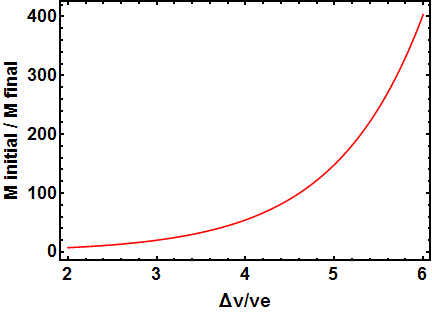11: Everything You Need to Know about the Rocket Equation (Physics and Applied Mathematics)
What is the Rocket Equation?
The rocket equation is a fundamental principle in physics, based on Newton’s Third Law of Motion) that describes the motion of rockets in space. It is a mathematical formula that calculates the velocity of a rocket based on its mass, the mass of the propellant it carries, and the speed at which it expels that propellant.
The equation shows that as the mass of the rocket decreases (as it expels propellant), its velocity increases. This is because the rocket's momentum is conserved, and as the mass decreases, the velocity must increase to maintain momentum.
The rocket equation is important because it determines the amount of propellant required to achieve a certain velocity or distance in space. It also shows that there are limits to the performance of rockets, as increasing the propellant mass requires a corresponding increase in the initial mass of the rocket, which makes it heavier and more difficult to launch.
What's the Physics behind this? (Calculus-I prerequisite)
Here, we derive this equation:
Take the initial momentum of the rocket to be the mass of the rocket (m) multiplied by the velocity (V).
For the final momentum, there is a loss of dm (relatively low) mass of propellant expelled, the rocket’s mass becomes m-dm. The propellant moves at a velocity of V-Velocity of exhaust (Ve) and the rocket moves at a velocity of V + dv (small change)
This gives us dm(V-Ve) + (m-dm)(V+dv)
Initial momentum = final momentum, hence
mV = dm(V-Ve) + (m-dm)(V+dv)
mV = dmV – dmVe + mV + mdu – dmV – dmdv
dmdv is far too small, so it can approximated and removed from the equation.
mV cancels on both sides and dmV cancels -dmV, leaving us with:
-dmVe + mdv = 0
Hence, mdv = Vedm
Multiplying by 1/m on both sides, we get
dv = Ve * dm * 1/m
Integrating both sides,
(It doesn't show the exact equation here but what's written right below is the final result).
Hence,
[V]Vf V0 = Ve [ ln(m)]mf m0
Which yields:
Vf = Ve {ln(mf) – ln(m0)}
Hence, Vf = Ve {ln (mf/m0)}
So Vf/Ve = ln (mf/mo)
This formula then yields the ratio of final payload (mf) to total initial mass (m0) in terms of a ratio of velocity.
01001100 01101001 01110110 01100101 00100000 01001100 01101111 01101110 01100111 00100000 01100001 01101110 01100100 00100000 01010000 01110010 01101111 01110011 01110000 01100101 01110010 00100001 (No, your computer isn't hanging).

Comments
Post a Comment